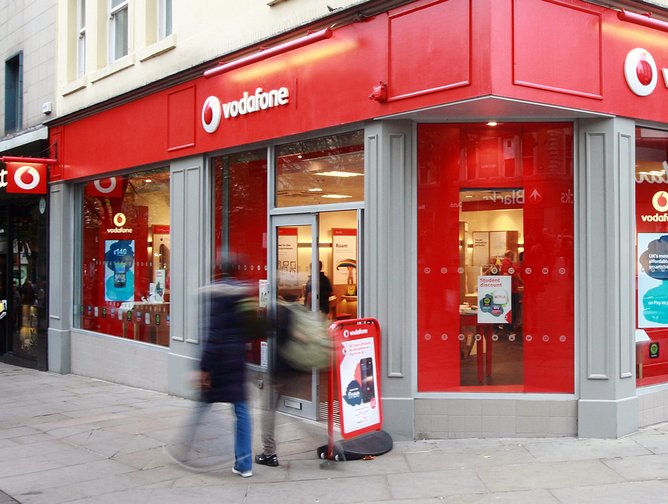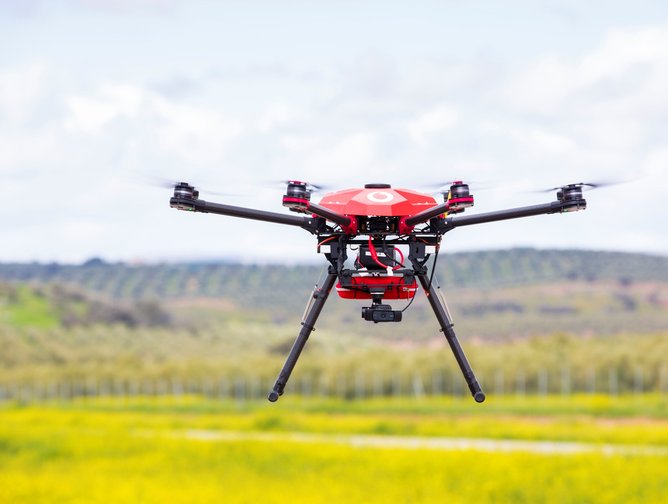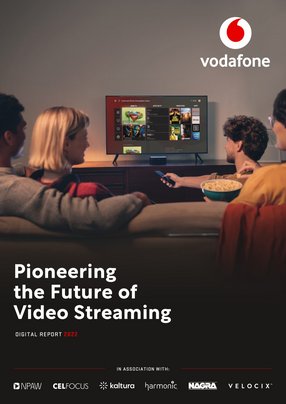When Vodafone began prototyping what would become Vodafone TV in 2015, nobody could imagine that six years later it would be the core platform that drives the majority of the company’s TV business.
“Honestly, when we started, we just said: ‘What can we do differently?’”, says Wolfgang Zeller, the Head of Vodafone’s Video Centre of Excellence.
Until that point, Vodafone was best known as a global leader in mobile and telecommunications. Today, Vodafone serves 22 million TV subscribers and is the leading pay TV provider in many major markets.
The reality is that our relationship with video has irreversibly changed. When Vodafone TV initially launched in Italy, the first of many markets it would go on to conquer, the service offered a hybrid (OTT and DTH) proposition.
“That platform has evolved to the point that today it’s not really recognisable,” Zeller says. “Today we serve cable networks, fibre networks, mobile networks and DSL networks. We have a hybrid solution that supports all the different network types you’ll find in the Vodafone universe.”
Vodafone TV was the first service to offer consumers true freedom in how they choose to access video content, with live TV, network based recordings, video on demand (VOD) and third-party OTT streaming services accessible in one package. In many ways, the service set the gold standard for the TV providers of today, but the consumer story is only half the tale; it was in the backend technology that the true revolution was happening.
“When we started off, we made a few big bets,” Zeller recalls. “The main one was to run everything in the cloud. Six years ago, nobody was doing anything particularly exciting in the cloud, especially in the TV space. The other big bet was we wanted to use OTT technologies, and they both paid off very well.
“The jump to the cloud allowed us to launch into markets quite quickly. We have launched into 10 markets in the past five years, which is very fast if you compare it to the old days. We used web technologies, which allowed us to innovate faster, set top boxes to support different network types, and integrate third parties such as Netflix and Amazon Prime.”
Building for the Future
Vodafone TV was built with an eye on the future from the very beginning, but working within the cloud has paid off in more ways than one.
"To top it off, we now have our own product that we drive, but we have a lot of legacy migrations that have all been migrated to a platform in the cloud. Six years ago, nobody thought about what we were going to do with legacy platforms, but moving to the cloud allowed us to do these migrations as quick as launching markets.
“The true beauty is that we now have one central platform: we develop once, it runs in the cloud, and it’s equal for every market,” he adds. “So when we deploy a feature in one market, it is available for everybody else."
Going first can provide a huge competitive advantage, but leading from the front throws up unique challenges. As much as working in the cloud creates efficiencies and adds agility to everything from market launches to UI tweaks, Zeller says there is “never a definition of ‘done’”.
“Going into the cloud was a big advantage for us, however the cloud itself is innovating rapidly,” Zeller says. “So every time you think you have it under control, there’s a new technology that allows you to do things quicker or smarter. It means we are continuously evolving the platform.”
The video streaming space has become central to our lives. Even before the outbreak of COVID-19, streaming video was on course to rapidly outstrip traditional forms of broadcast. Self-shot video and short clips from shows and movies have become central to the way we share stories about our lives on social media, access breaking news and interact on messaging apps. Under the pandemic, video dominates our working lives. Video calls have become the central and most effective method of communication in our professional lives.
“This whole industry is going through a transformation,” says Zeller. It raises both challenges and opportunities. With the launch of increasing amounts of media applications and content providers going direct to business, Zeller’s team face a tough task of packaging them neatly for consumers. On the technology side, “we have to do a lot of lifting in the back end to make this extra activity happen”.
The next big push is towards low latency streaming. Already hi-definition has become standard, with a move towards 4k resolution and, in the near future, 8k as displays and content become more readily available. Latency is the only area where streaming falls short of traditional broadcast. Live sport, one of the remaining bastions of live TV, is a prime example.
“With sporting events you could really tell which customer is using which type of infrastructure when there was a goal,” Zeller says. “There was the analogue customer who got it first, then you have digital cable broadcast, and then you have IP streaming at least 20 seconds behind. So now there’s a lot of investment going into low latency and we are using our partner ecosystem to get there. We want to get back to as good as in the days of analogue TV.”
Best in Class Partner Ecosystem
This partner ecosystem is vital to Vodafone TV, and much of Zeller’s team’s work revolves around stitching those solutions together into a perfect end-to-end solution.
“Key partners to our ecosystem include Kaltura, which is well known in industry, and provides most of our backend components. Another is Nagra, our incumbent and also future security provider. They went with us through a transformation from on-premises into the cloud in a giant effort that paid off massively, for us, but also for Nagra; it’s a very future-proof solution.”
Velocix is Vodafone TV’s partner for video delivery including network PVR and CDN, and for encoding, important for 4k and the future of 8K delivery, is Harmonic.
“With Harmonic we underwent another transformation from on-premises to hybrid-model and the cloud, which all connects nicely,” Zeller says. “And when you have all these partners all together, then you have to question how you're going to measure user experience and video quality, and for that we are teaming up with Nice People at Work (NPAW). Their solution provides us with very accurate QE reporting for us to understand where we need to improve, where we have bottlenecks in our network, and where customers might have issues with connectivity and quality.”
Zeller characterises these partnerships as more than just transactional vendor relationships, with joint roadmaps, and joint initiatives to grow and develop simultaneously.
“We put a lot of effort into that, because we are not just working with one company, we are working with many, and they all need to align to come together and deliver for our customers. The same is true on the client side.”
The Future of Video Streaming
Beyond set top boxes and at-home streaming, Zeller is now looking to the future of video, one in which video is ubiquitous wherever we are, and whatever we are doing - even while travelling by car.
“To me it's crystal clear that in the future video will be everywhere; it will be immersed in our day-to-day life even more than it is today,” he says. “Maybe it will take a different form: it isn't always going to be a game show or drama.
“The user experience will change, because at the moment it is quite focused on the TV set and the mobile device. But you will have video consumption when you're sitting in the autonomous car, that's going to be its own environment, when you use public transportation, that is going to be another different environment. User interface and interaction is a big puzzle to be solved first.”
Augmented reality (AR), virtual reality (VR) and the widely touted promise of the metaverse hold further opportunities as they expand beyond novelty tech towards more integrated real-life experiences. It means improving network capabilities and leveraging computing power at the edge to ensure video can be delivered to the user. “We are toying around with a lot of this at the moment,” says Zeller. “Is it ready to launch right now? I would say no. But it will come in one way or the other.”
The future of video streaming is not quite as crystal clear as the 4k video we enjoy today. There are hundreds of possibilities: theoretically anything with a display will become a candidate for video in the years ahead, with IoT devices sending video traffic to and from the home.
“This all needs to be served out of one platform to the end consumer, otherwise you have too many apps and that's not going to work. But you will again see aggregation of this in a single user experience - on different devices.”
Video will become even more central to Vodafone’s business and our lives.
“For us at the Centre of Video Excellence, video will of course be at the core of what we focus on. But it also requires network and infrastructure, whether we’re looking at 5g or 6g becoming ever faster and more reliable,” says Zeller.
“But what it really comes down to is that we will have access to more information and that information will be primarily video-based in the near future. That’s why we at Vodafone are putting a lot of effort into making that a reality and ensuring we can achieve our goals.”






